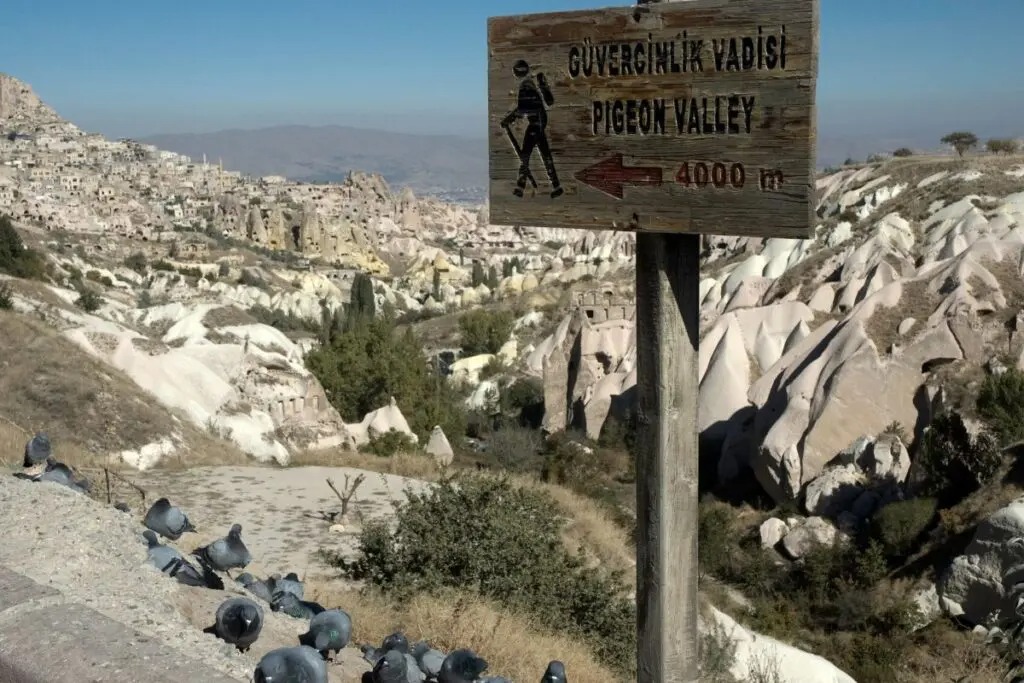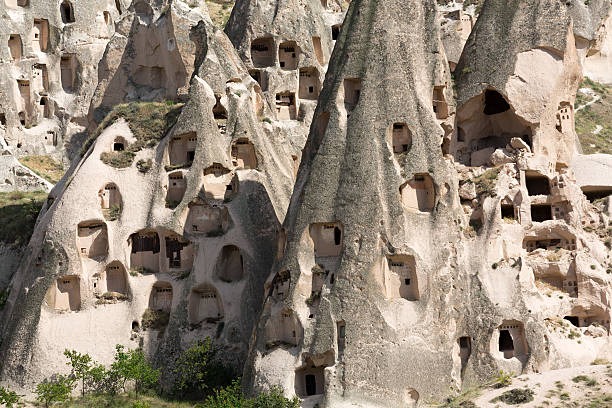Uçhisar Castle And The Enigmatic Stone Village Of Cappadocia
Uçhisar is a small town in the heart of Cappadocia, Turkey, known for its towering rock formation, Uçhisar Castle.
This impressive structure stands tall on the edge of Göreme National Park, offering a unique glimpse into the area’s rich history.

Uçhisar: An Important Defensive Site For The Byzantines
The name Uçhisar means “Outer Citadel” in Turkish.
The town has a long history, possibly to Hittite times. It was first mentioned in the 14th century.

In the seventh century AD, the citadel was an important defensive site for the Byzantines.
They used the rocky terrain to protect themselves from invasions.
Later, the Seljuks and Ottomans also recognized the strategic importance of the area and made use of its natural defenses.

The Uçhisar Castle
Uçhisar Castle is a 60-meter-high rock formation that can be seen from miles around.
But it’s not just a rock—it’s a marvel of ancient engineering.
Long ago, people carved out rooms, tunnels, and staircases inside the soft volcanic rock, creating a complex network of spaces.
Around 1,000 people once lived inside this rock castle, which served as both homes and possibly places of worship during the Byzantine period.
Although much of the castle’s interior is now inaccessible due to erosion, visitors can still explore its labyrinthine passages and climb to the summit for breathtaking panoramic views of Cappadocia.

From this vantage point, the vast expanse of the region unfolds before your eyes, with the fairy chimneys and valleys of Göreme stretching out in every direction.

Hidden Chambers and Caves
Many of the rooms inside the castle are now empty, but they tell stories of the people who lived here centuries ago.

Some chambers are small and cozy, while others are larger and more spacious.

The castle’s design was not just practical but also defensive, with rooms positioned in ways that made it difficult for invaders to navigate.


The Church of St. Basil
Inside the castle, you’ll also find the Church of St. Basil, a rock-cut church dating back to the 6th century.

Although it’s not easy to access, this small church offers a quiet place for reflection.
Its simple design and ancient walls provide a stark contrast to the grander structures you might find elsewhere.

The Village of Uçhisar
The village around the base of Uçhisar Castle is full of old stone houses, many of which have been turned into charming boutique hotels.
This transformation began when French visitors and Turks returning from France recognized the potential of these historic buildings.
In the center of the town, there’s a tunnel that runs for about 100 meters under some houses.
This tunnel likely connected the castle to the outside world in ancient times and helped protect the town’s water supply.

Pigeon Valley
One of the most beautiful features of Uçhisar is the nearby Güvercinlik Valley, or Pigeon Valley.
This valley, which stretches between Uçhisar and the town of Göreme, is known for its pigeon houses carved into the rock.
In the past, locals collected pigeon droppings to use as fertilizer and to brighten the colors of frescoes in Cappadocia’s cave churches.

A UNESCO World Heritage Site
Uçhisar Castle and its surroundings are so special that they were added to the UNESCO World Heritage list in 1985.
The castle has also been protected as a National Park since 1986, ensuring that this remarkable site will be preserved for future generations.



